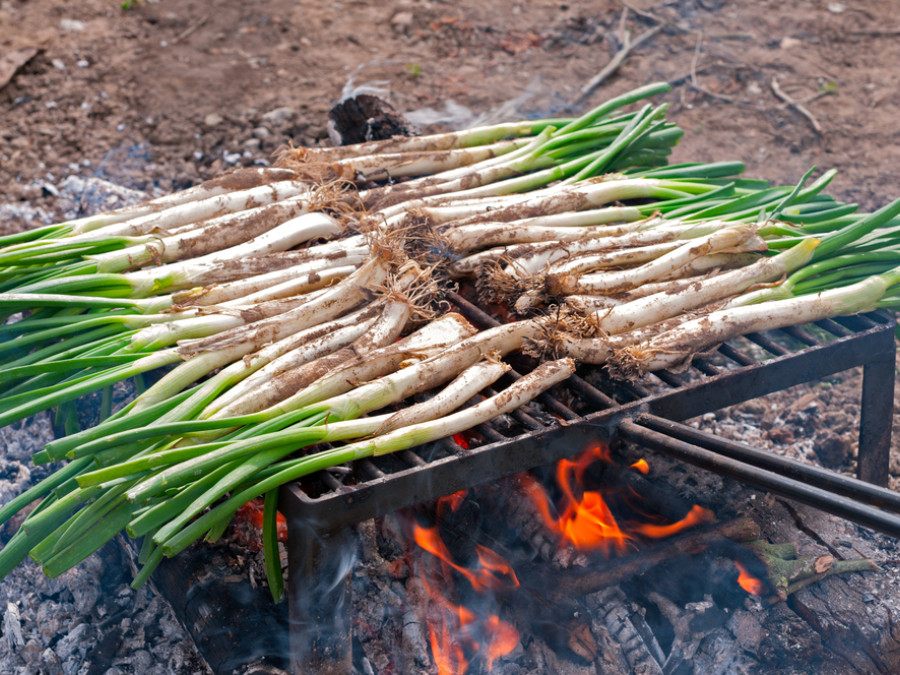The Catalan calçot looks like a leek and tastes like a mild onion. Not the kind of thing to get the average foodie’s pulse racing, you might think, and yet, come spring, Catalans go completely mad for this humble vegetable.
The calçots provide the perfect excuse for a big get-together with family and friends at wine-fuelled barbecues called a calçotada. The spiritual home of the calçot is Valls, in the southern part of Catalonia, but they are available everywhere. In the wooded hills of Collserola, on the outskirts of Barcelona, there are several old farmhouses (masies) which have been converted into restaurants which serve calçotadas.

How to eat them
Calçotadas are messy—REALLY messy—which is half the fun. The calçots are roasted over the hot coals, peeled of their blackened skins, and served with nutty romesco sauce. You might be given a napkin to tie around your neck, or even some plastic gloves, but you’ll probably end up covered in barbecue smut all the same. Hold the white tip of the calçot firmly in one hand, and pull the top of the blackened leaves with the other. You should be left with a tender shoot, which you can douse liberally with romesco sauce before dropping it in your mouth. Huge platters of sausages and chops accompany the mounds of calçots, and wine is served in the porró, the traditional, long-spouted Catalan wine jug. If you weren’t raised drinking from the porró, chances are you’ll get most of it all over you: but don’t forget, practice makes perfect.

Calçot season is in the winter, from November to March. We love to earn our feast by hiking across the hills behind Barcelona to one of the restaurants there, eating to our heart’s content and hitting the trail home before it gets dark.
